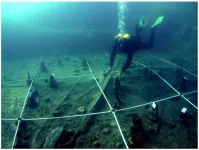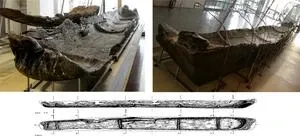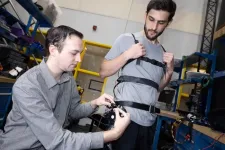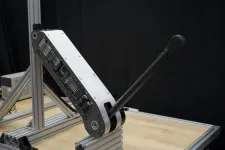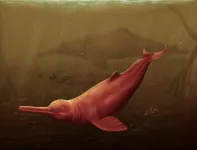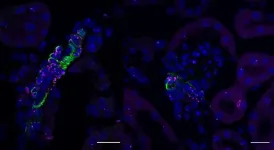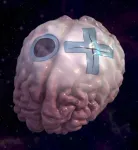(Press-News.org) More than 7,000 years ago, people navigated the Mediterranean Sea using technologically sophisticated boats, according to a study published March 20, 2024 in the open-access journal PLOS ONE by Juan F. Gibaja of the Spanish National Research Council, Barcelona and colleagues.
Many of the most important civilizations in Europe originated on the shores of the Mediterranean Sea. During the Neolithic, communities clearly traveled and traded across the water, as evidenced by watercraft in the archeological record and the presence of settlements on coasts and islands. In this study, Gibaja and colleagues provide new insights into the history of seafaring technology through analysis of canoes at the Neolithic lakeshore village of La Marmotta, near Rome, Italy.
Excavation at this site has recovered five canoes built from hollowed-out trees (dugout canoes) dating between 5700-5100BC. Analysis of these boats reveals that they are built from four different types of wood, unusual among similar sites, and that they include advanced construction techniques such as transverse reinforcements. One canoe is also associated with three T-shaped wooden objects, each with a series of holes that were likely used to fasten ropes tied to sails or other nautical elements. These features, along with previous reconstruction experiments, indicate these were seaworthy vessels, a conclusion supported by the presence at the site of stone tools linked to nearby islands.
The authors describe these canoes as exceptional examples of prehistoric boats whose construction required a detailed understanding of structural design and wood properties in addition to well-organized specialized labor. Similarities between these canoes and more recent nautical technologies support the idea that many major advances in sailing were made during the early Neolithic. The authors suggest there may be more boats preserved near La Marmotta, a potential avenue for future research.
The authors add: “Direct dating of Neolithic canoes from La Marmotta reveals them to be the oldest in the Mediterranean, offering invaluable insights into Neolithic navigation. This study reveals the amazing technological sophistication of early agricultural and pastoral communities, highlighting their woodworking skills and the construction of complex vessels.”
#####
In your coverage please use this URL to provide access to the freely available article in PLOS ONE: https://journals.plos.org/plosone/article?id=10.1371/journal.pone.0299765
Citation: Gibaja JF, Mineo M, Santos FJ, Morell B, Caruso-Fermé L, Remolins G, et al. (2024) The first Neolithic boats in the Mediterranean: The settlement of La Marmotta (Anguillara Sabazia, Lazio, Italy). PLoS ONE 19(3): e0299765. https://doi.org/10.1371/journal.pone.0299765
Author Countries: Spain, Italy, Argentina
Funding: The research has been carried out in the collaboration agreement between the Museo delle Civiltà and the Spanish Scientific Research Council (centres in Barcelona IMF-CSIC and Rome EEHAR-CSIC) and the National Accelerators Centre (CNA) in Seville. Several projects have resulted from this collaboration funded by the Ministry of Science and Innovation and State Research Agency of Spain, Marie Curie Europe Program, JdC-Formación 2020 AEI Program, and Ministry for University and Research of Italy: PID2020-112513RB-I00/AEI/10.13039/501100011033, HAR2016-75201-P, PIAR-201818008, PIAR-201918010, QUANT-792544, PICT-2015-2541 and Rita Levi Montalcini project ‘AGER’. The funders had no role in study design, data collection and analysis, decision to publish, or preparation of the manuscript.
END
The first Neolithic boats in the Mediterranean
Canoes from Italy reveal early development of advanced nautical technology
2024-03-20
ELSE PRESS RELEASES FROM THIS DATE:
Universal controller could push robotic prostheses, exoskeletons into real-world use
2024-03-20
Robotic exoskeletons designed to help humans with walking or physically demanding work have been the stuff of sci-fi lore for decades. Remember Ellen Ripley in that Power Loader in Alien? Or the crazy mobile platform George McFly wore in 2015 in Back to the Future, Part II because he threw his back out?
Researchers are working on real-life robotic assistance that could protect workers from painful injuries and help stroke patients regain their mobility. So far, they have required extensive calibration and context-specific tuning, which keeps them largely limited to research labs.
Mechanical engineers at Georgia Tech ...
Autism acceptance varies across countries – where should we target support?
2024-03-20
Societal acceptance of autism varies considerably across different countries, with lowest levels of acceptance found in Japan and Belgium, new research shows.
A survey of 306 autistic individuals from eight countries revealed that around three quarters of respondents do not feel accepted, or only sometimes feel accepted, as an autistic person. Among these countries, participants in Japan and Belgium reported the lowest levels of acceptance, while those in Canada, the UK, and South Africa reported comparatively higher levels.
The study, published in PLOS ONE, is the ...
A replacement for traditional motors could enhance next-gen robots
2024-03-20
Whether it’s a powered prosthesis to assist a person who has lost a limb or an independent robot navigating the outside world, we are asking machines to perform increasingly complex, dynamic tasks. But the standard electric motor was designed for steady, ongoing activities like running a compressor or spinning a conveyor belt – even updated designs waste a lot of energy when making more complicated movements.
Researchers at Stanford University have invented a way to augment electric motors to make them much more efficient at performing dynamic ...
Icy impacts: Planetary scientists use physics and images of impact craters to gauge the thickness of ice on Europa
2024-03-20
WEST LAFAYETTE, Ind. — Sometimes planetary physics is like being in a snowball fight. Most people, if handed an already-formed snowball, can use their experience and the feel of the ball to guess what kind of snow it is comprised of: packable and fluffy, or wet and icy.
Using nearly the same principles, planetary scientists have been able to study the structure of Europa, Jupiter’s icy moon.
Additional Information
When worlds collide: Studying impact craters to uncover the secrets of the solar system
Breaking in a new planet
Purdue scientists and engineers push the boundaries of space knowledge, studying the ...
Ancient giant dolphin discovered in the Amazon
2024-03-20
Measuring between 3 to 3.5 meters, 16 million years old: Paleontologists from the University of Zurich have announced the discovery of a new species of freshwater dolphin in the Peruvian Amazon region. Surprisingly, its closest living relatives can be found in the river dolphins of South Asia.
River dolphins are among the rarest modern cetaceans, with most extant species critically endangered. Despite their similar appearance, however, these animals are not directly related, but represent the late survivors of different cetacean groups that once inhabited our planet.
An international ...
Study suggests an ‘odor sensor’ may explain male and female differences in blood pressure
2024-03-20
Using data from both mice and humans, a Johns Hopkins Medicine research team has found that a cell surface protein that senses odors and chemicals may be responsible for — and help explain — sex differences in mammalian blood pressure. The unusual connection between such protein receptors and sex differences in blood pressure, reported in the March 20 issue of Science Advances, may lead to a better understanding of long known differences in blood pressure between females and males.
Blood ...
Repairing patients’ dura more durably
2024-03-20
Repairing patients’ dura more durably
Highly adhesive and mechanically strong Dural Tough Adhesive addresses multiple limitations in the repair of the dural membrane lining the brain and spinal cord after trauma and surgeries.
By Benjamin Boettner
(BOSTON) — The dural membrane (dura) is the outermost of three meningeal layers that line the central nervous system (CNS), which includes the brain and spinal cord. Together, the meninges function as a shock-absorber to protect the CNS against trauma, circulate nutrients throughout the CNS, as well as remove waste. The dura also is a critical biological barrier that contains cerebrospinal fluid (CSF) surrounding ...
Quantum talk with magnetic disks
2024-03-20
Quantum computers promise to tackle some of the most challenging problems facing humanity today. While much attention has been directed towards the computation of quantum information, the transduction of information within quantum networks is equally crucial in materializing the potential of this new technology. Addressing this need, a research team at the Helmholtz-Zentrum Dresden-Rossendorf (HZDR) is now introducing a new approach for transducing quantum information: the team has manipulated quantum bits, so called qubits, by harnessing the magnetic field ...
Earlier retirement for people with chronic musculoskeletal pain
2024-03-20
Frequent musculoskeletal pain is linked with an increased risk of exiting work and retiring earlier, according to a new study from the University of Portsmouth.
The paper published this week in open-access journal PLOS ONE found the association between musculoskeletal pain and retiring earlier persisted even after accounting for working conditions, job satisfaction and sex.
Dr Nils Niederstrasser and colleagues used data on 1,156 individuals aged 50+ living in England who took part in the English Longitudinal Study of Ageing. Over the course of the 14-year data collection period, 1,073 of the individuals retired.
The researchers found that people with musculoskeletal ...
Tiny magnetic implants enable wireless healthcare monitoring
2024-03-20
A millimeter-scale, chip-less and battery-less implant can wirelessly monitor a series of parameters within your body and communicate with a wearable device attached on the skin. In a recent study published in the journal Science Advances, researchers from Peking University have unveiled a miniaturized implantable sensor capable of health monitoring without the need of transcutaneous wires, integrated circuit chips, or bulky readout equipment, thereby reducing infection risks, improving biocompatibility, and enhancing portability.
Han Mengdi from Peking University, the lead researcher of ...
LAST 30 PRESS RELEASES:
Norbert Holtkamp appointed director of Fermi National Accelerator Laboratory
New agentic AI platform accelerates advanced optics design
Biologists discover neurons use physical signals — not electricity — to stabilize communication
Researchers discover that a hormone can access the brain by hitchhiking
University of Oklahoma researcher awarded funding to pursue AI-powered material design
Exploring how the visual system recovers following injury
Support for parents with infants at pediatric check-ups leads to better reading and math skills in elementary school
Kids’ behavioral health is a growing share of family health costs
Day & night: Cancer disrupts the brain’s natural rhythm
COVID-19 vaccination significantly reduces risk to pregnant women and baby
The role of vaccination in maternal and perinatal outcomes associated with COVID-19 in pregnancy
Mayo Clinic smartwatch system helps parents shorten and defuse children's severe tantrums early
Behavioral health spending spikes to 40% of all children’s health expenditures, nearly doubling in a decade
Digital cognitive behavioral treatment for generalized anxiety disorder
Expenditures for pediatric behavioral health care over time and estimated family financial burden
Air conditioning in nursing homes and mortality during extreme heat
The Alps to lose a record number of glaciers in the next decade
What makes a good proton conductor?
New science reporting guide published for journalists in Bulgaria
New international study reveals major survival gaps among children with cancer
New science reporting guide published for journalists in Turkey
Scientists develop a smarter mRNA therapy that knows which cells to target
Neuroanatomy-informed brain–machine hybrid intelligence for robust acoustic target detection
Eight SwRI hydrogen projects funded by ENERGYWERX
The Lundquist Institute and its start-up company Vitalex Biosciences Announces Strategic Advancement of Second-Generation fungal Vaccine VXV-01 through Phase 1 Trials under $40 Million Competitive Con
Fine particles in pollution are associated with early signs of autoimmune disease
Review article | Towards a Global Ground-Based Earth Observatory (GGBEO): Leveraging existing systems and networks
Penn and UMich create world’s smallest programmable, autonomous robots
Cleveland researchers launch first major study to address ‘hidden performance killer’ in athletes
To connect across politics, try saying what you oppose
[Press-News.org] The first Neolithic boats in the MediterraneanCanoes from Italy reveal early development of advanced nautical technology
